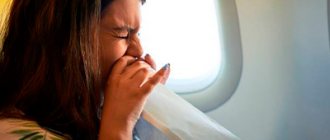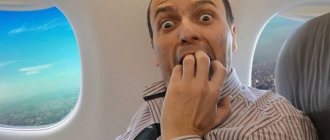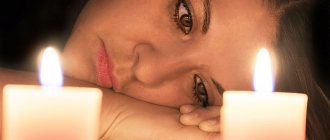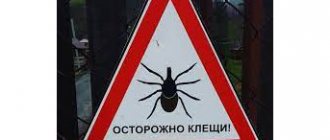Aerophobia, that is, fear of flying, affects almost 30% of the world's population over 25 years of age. Among them, 10% have never taken to the air in their lives, because fear prevented them from doing so. Such people suffer greatly, not being able to make a career if their work involves flying, as well as traveling to distant countries. But in our time, aviation is the fastest, most frequently used and convenient mode of transport.
Symptoms of aerophobia
A person suffering from this disorder is terrified of flying. Already on the eve of the flight, he begins to get very nervous. During the flight itself, his breathing becomes ragged, his heart rate quickens, his muscles tense, and his palms become sweaty.
While on an airplane, aerophobes constantly think about a possible accident, monitor the movements of the crew members around the cabin, listen to the surrounding sounds and analyze them. They cannot relax and get distracted; they feel constant irritability and anxiety.
The mental symptoms of aerophobia are often accompanied by vegetative ones, which are expressed in the following:
- tachycardia;
- headaches localized in the temporal region;
- pale skin;
- nausea, abdominal pain;
- frequent urination;
- shiver;
- bronchospasm;
- rapid breathing;
- hyperhidrosis;
- pain in the heart area like angina pectoris.
Consultation with a psychologist
examination and treatment at home or in a clinic
rehabilitation until complete recovery we work around the clock
Call a doctor at home Leave a request and we will call you back in 1 minute
8
Or call
Ways that don't work
Instead of undergoing treatment, aerophobes prefer to avoid frightening situations - physically, by refusing to fly, or mentally. Alcohol, tranquilizers, and attempts to “talk out” or “read out” your fear are used. But what we are trying to hide from immediately becomes a mega-dangerous event for the brain, simply because we are trying to evade it. Fear intensifies. The circle closes. Aerophobia is like a mutant cat: the more you feed it, the larger it grows and the more food it requires.
Causes of aerophobia
- a stressful situation that occurred in the past during an air flight (inexperienced crew, entering an area of increased turbulence, flying in difficult weather conditions);
- active coverage of plane crashes in the media;
- fear for one’s health, which is often found in people with chronic diseases;
- inability to control events yourself;
- lack of confidence in the sufficient competence of the aircraft crew;
- the presence of other mental disorders;
- some features of education and character formation;
- genetic predisposition and other causes of aerophobia.
How to relieve a panic attack
If you're already in trouble, alcohol and sedatives won't help.
Panic is a physiological thing. When you get scared, you automatically take a deep breath: “Ahh!”, and this starts the adrenaline chain. The brain receives an SOS signal! and releases a portion of adrenaline into the blood. The heart begins to beat faster in order to pump this blood through the entire body faster, increasing the reaction rate. The body tenses, ready to jump or fight. In a normal situation, when, say, a maniac is chasing you, the brain immediately receives a release. You punch the maniac in the eye or run away. The danger disappears. You exhale with relief, and the reverse process begins: the person calms down. On the plane, there is no detente. The consciousness distorted by aerophobia continues to signal danger. The brain releases a new portion of adrenaline. And so, round and round, you go into a panic tailspin. To get out of it, you need to run the process in the opposite direction. Close your eyes, lean back in your chair, take a calm and shallow breath, and then slowly exhale through your nose, repeating to yourself syllable by syllable: “Relax.” And really relax, go limp, releasing tension from your legs and arms, stomach and cervical spine. And hold the new breath a little and again try to breathe calmly and shallowly. The exercise must be repeated until the heartbeat calms down. This will not cure aerophobia, but it will help you calm down.
Consequences of aerophobia
Aerophobia can be isolated or combined. Isolated disorder is uncommon. It usually develops against the background of a traumatic situation associated with air travel. Combined aerophobia is diagnosed much more often. It is one of the manifestations of anxiety disorders. In people suffering from combined aerophobia, anxious personality traits usually appear from early childhood.
The consequences of aerophobia are usually associated with the development of avoidance behavior. In this case, people begin to avoid not only air travel itself, but also any things related to it. This significantly limits their opportunities and reduces their quality of life. Due to aerophobia, they cannot fully relax and travel, and often experience difficulties with work.
Aerophobia does not cause any unpleasant consequences for health or life. Its most severe manifestation is a panic attack, which can develop during the flight. During a panic attack, the aerophobe experiences severe fear and anxiety, and also develops a number of somatic symptoms - tachycardia, headache, dizziness, rapid breathing, etc.
How is it treated
Aerophobia has long been well studied and responds well to therapy.
Moreover, in most cases it can be cured in a couple of days. The most effective therapy is complex, it includes three main elements: first, an educational program, during which the laws of aerodynamics, the structure of the aircraft, safety systems and other aviation details are explained to you; secondly, psychological support to help relieve anxiety and understand what you are really afraid of; and thirdly, work on removing the “airplane = fear” reflex, for which they use professional pilot simulators, virtual reality simulators and joint flights accompanied by aerophobia specialists. In Russia, such programs are offered by Aleksey Gervash, an active pilot and aviation psychologist. Here you can take an online or offline course, group or individual therapy. In mild cases, it is enough to watch the video course to get rid of the fear of flying forever.
Treatment of aerophobia
Many people have a mild fear of flying. To cope with it, they should adhere to the following rules:
- do not buy tickets for seats next to the windows;
- choose travel companions who are not afraid of flying;
- During the flight, try to distract yourself by reading, listening to calm music or watching an interesting movie.
It is almost impossible to get rid of severe aerophobia on your own; this requires professional psychotherapeutic help.
To treat panic fear of air travel, specialists use the following techniques:
- neurolinguistic programming;
- hypnosis;
- cognitive behavioral therapy.
When carrying out treatment, the psychotherapist tries to find out the cause of fear, to determine its primary source, which is not always associated with the sky and airplanes. Having found the cause, the doctor begins psychotherapeutic work aimed at destroying the ingrained psychological connection. He also teaches the patient relaxation skills, allowing the aerophobe to extinguish emerging panic attacks on his own.
A specialist who treats aerophobia teaches the patient to think rationally and behave correctly under stress. He teaches him relaxation techniques and skills, teaches him to control his fears, and replaces destructive beliefs with positive ones. The doctor helps the aerophobe get rid of obsessive thoughts and develops the correct thinking and behavior skills.
Drug therapy for the treatment of aerophobia is usually not used, since it only helps to temporarily eliminate the symptoms of the pathology, but is not able to cope with its causes. If you are terrified of flying, contact our clinic. We will help you overcome your fears and cope with aerophobia.
Doctors at our clinic treat various types of addictions and phobias. By contacting us, you can receive professional psychotherapeutic help. After this, you will be able to fly completely calmly, without experiencing any unpleasant emotions.
In airplane
If you are already sitting on the plane, then half the work is done and you can be proud of yourself. But you feel yourself starting to panic. These few steps will help you manage your anxiety.
- Try to relax,
take a comfortable position, put on a sleep band, turn on calm music. Breathing always helps to calm down: inhale (half as long as exhale), you can breathe counting and as slowly as possible. By concentrating on this process, you will not notice how the unpleasant sensations will leave you. If the sounds of turbines scare you, use headphones. - Talk to a fellow passenger
or walk around the plane. - Prepare yourself for the pleasant things that await you:
imagine how happy you will be when you see your friends or visit new places, try new food, meet your family. - Use mobile apps
for aerophobes, such as Skyguru. It works in airplane mode and tells you in detail what is happening during the flight. The passenger receives information about when to expect turbulence and whether to be afraid of shaking on board. During the flight, the application “talks” to the user, so you have a feeling of security, a constant connection with a psychotherapist, albeit a virtual one. - The sooner you realize
that you are experiencing panic, the sooner you can cope with it. By ignoring your emotions, you only make the situation worse. Accept your anxiety.
Pathogenesis
Immediately before and during a flight, people with aerophobia arrive in a state of constant tension. Because of this, their breathing quickens, their heart rate increases, and their anxiety increases.
The psychological basis of this state is the fear of death . However, if with a real threat to life the fear of death is a natural instinct, then with aerophobia such fear is unfounded. Therefore, such a phobia is a disorder that requires treatment.
What happens if…
...turbulence will begin
Turbulence is the most absurd fear in the world: not a single plane has ever crashed because of it in the entire history of civil aviation. These are just small fluctuations associated with non-uniform air temperatures. The overloads that the plane experiences are much less than those encountered by a car on a rough road. And there are no air pockets at all. The feeling of falling into a hole occurs when the plane loses only a little vertical speed, without losing horizontal speed. It’s just that our vestibular apparatus, not accustomed to sensations in 3D format, perceives this as a sharp fall.
...the engines will fail
It is not the engines that keep the plane in the air, they only create acceleration, and the car flies thanks to the difference in pressure above and below the wing: approximately the same force lifts your hand up if you try to put it out the window of a moving car. If all the engines fail, the plane will not fall down like a stone, but will only begin to slowly descend, sliding along a cushion of air. After all, under the belly is not emptiness at all, but a gas that has a certain density - the higher the speed and the lower the temperature outside, the higher this density. Thanks to its aerodynamic properties, the plane can glide, slowly sliding down the air slide for more than 40 minutes - usually this time is enough to find some airport and land calmly.
...won't graduate
landing gear The plane will land either on a plowed dirt strip or on concrete filled with special foam, slide on its belly for some time and stop.
...the plane gets hit by lightning
This happens all the time and does not lead to any incidents. When designing the aircraft, the possibility of a lightning strike was taken into account; the discharge passes through the aluminum skin and is discharged into the air without causing any damage.
...the wing will fall off
This is impossible. It is completely normal for the wing to vibrate during turbulence and landing. Flexibility is precisely what guarantees that the wing will not fall off - just like a flexible tree will not break in a storm. The wing, like all other parts of the aircraft structure, is designed in such a way that during testing it can withstand loads many times stronger than during a real flight.
...the pilot will fall asleep
Most of the flight is not controlled by people, but by an autopilot. In addition, there are always two pilots. They even eat different foods to eliminate the possibility of simultaneous poisoning.
...the weather will turn bad
Fog, wind, hail, and heavy rain are not considered bad weather. Modern airports are equipped with an automatic landing control system, thanks to which the plane can land even blindly, and pilots constantly undergo special training for flying in adverse conditions. If the weather is too bad, the plane will simply not take off or land at another airport.
Classification
Experts divide aerophobia into two periods:
- Pre is the period before a flight when a few days or hours before a flight a person develops nervousness. In this case, the patient can be either aggressive and irritable, or withdrawn and depressed. Immediately before the flight, he can do everything to ultimately avoid boarding the plane.
- The period in flight - after boarding the aircraft, a number of characteristic symptoms develop: heart rate and pressure increase, tremors , sweating , and gastrointestinal dysfunction are noted. A person “increases” his condition by analyzing the flight and the actions of the crew, imagining disasters. Moreover, any deviations from the norm during the flight can provoke a panic attack .
Diet
Diet for the nervous system
- Efficacy: therapeutic effect after 2 months
- Timing: constantly
- Cost of food: 1700-1800 rubles per week
Before the flight, it is recommended to eat lightly, since problems with the vestibular system are more likely to appear on an empty stomach. It is recommended to eat light, familiar food, without overusing fried and fatty foods.
It is better to drink herbal or green tea. You should avoid coffee and alcohol, as these drinks increase your heart rate.









